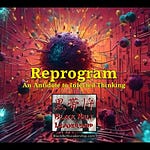I grew up in the golden era of comic books. DC and Marvel superhero comics dominated the racks at the drug, grocery, and department stores. Superman, Spiderman, X-Men, Wonder Woman, and Justice League to name a few. But one of my favorites was Batman.
Why? He was a hero who possessed no superpowers. Batman was a martial artist, who used his training, along with his wits and his amazing gadgets, to combat crime. His very presence, even his name, struck fear in Gotham’s criminal underworld.
One of my prized possessions growing up as a young boy was my Batman cowl. Placing that on my head made me feel powerful, invincible, and capable of doing anything.
Batman was a relatable hero, at least to me.
Batman was created by artist Bob Kane and writer Bill Finger. The Caped Crusader debuted in the 27th issue of the comic book, “Detective Comics,” on March 30, 1939. Batman proved to be such a popular superhero that a self-titled comic book series began publication in 1940.
Having witnessed the brutal murder of his parents, a young Bruce Wayne was raised as an orphan by the family butler, Alfred. Master Wayne, as he was affectionately called, dedicated his life to fighting the senseless violence and crime that led to the death of his parents. He chose the image of a bat, a creature of the night, to strike fear into the criminal underworld.
For more than 80 years, we’ve seen Batman in comics, TV, movies, animations, and video games. The Dark Knight’s face and logo are among the most recognized worldwide. His image and likeness have appeared on t-shirts, hoodies, shoes, hats, toys, lunchboxes, and nearly every product imaginable.
Batman is one of the rare characters that has transcended print and film to become part of our shared culture. Regardless of whether or not they follow comics or superheroes, people know who Batman is and what he stands for. He’s inspired thousands of cosplayers worldwide to don the cape and cowl.
The Batman series also introduced us to billionaire Bruce Wayne, Batman’s alter ego, as well as Alfred, the Butler. The franchise has also introduced us to other characters, including Dick Grayson (aka Robin, the Boy Wonder), Commissioner James Gordon and his daughter Barbara (aka Batgirl), Lucius Fox, and Chief O’Hara.
And, of course, there were the Villains of Gotham.
Batman’s first villain was Dr. Death, appearing in Detective Comics #29 (1939). Hugo Strange, a psychologist and chemist, made his appearance as Batman’s first major villain in 1940. Other major villains Batman has battled over the decades include Ra’s al Ghul, Poison Ivy, Scarecrow, the Penguin, the Joker, Harley Quinn, the Riddler, and Catwoman.
But I want to focus my attention on one particular villain, Harvey “Two-Face” Dent.
Two-Face debuted in Detective Comics #66 and then reappeared in Batman #1 (Spring 1940) but didn’t reappear until two issues of the Batman Comic series in the 1950s. After a two-decade absence, he reappeared in 1971, solidifying his position as one of Batman’s recurring foes.
If you don’t know the back story of this villain, it's worth telling.
Two-Face started out as Harvey “Apollo” Kent in the original comic series. His name was later changed to Harvey Dent.
By vocation, Harvey was Gotham City’s most respected and admired District Attorney. He was known for his unwavering fight against corruption, working closely with Commissioner Gordon and Batman to combat Gotham’s criminal underworld. He was handsome, with a promising political future ahead.
Harvey Dent carried a double-headed coin, which he often used to make decisions. One side was pristine; the other side was disfigured. The origin of the coin, by one account, goes back to Harvey’s father, Christopher, who also used the coin to make decisions, including whether to punish his son. This often led to physical abuse.
Another version of the story is that Christopher passed on the family’s “lucky coin” to his son, Harvey, who carried it as a lucky charm and used it to make important decisions. A third version is that the coin once belonged to the mob boss, Sal Maroni, and was used as evidence in the criminal prosecution of Maroni.
Regardless of its origin, the two-faced coin became the trademark symbol of Two-Face’s psychotic, delusional way of thinking.
So, how did a handsome, well-respected DA turn to a life of crime?
How did Gotham’s White Knight fall from grace?
It started in a Gotham courtroom, where Sal Maroni was on trial for murder.
Dent was making the prosecution’s case. As he approached the witness stand, Maroni threw a vial of acid at Dent, horribly disfiguring the left side of his face. This began Dent’s slow descent into madness and unleashing his dark side. Harvey suffered a severe psychological breakdown, leading to the emergence of a second, violent personality who was obsessed with duality and chance.
Two-Face was born.
In his twisted thinking, the corrupt legal system was responsible for his disfigurement. Batman became a symbol of Gotham’s injustice in Dent’s demented mind and he became obsessed with his demise. He also targeted those he believed were a part of the corrupt legal system, using his lucky coin to choose his victims or to determine their fate.
Harvey “Two-Face” Dent is an interesting villain, as he vacillates between his old self and the monster he has also become. Like Janus, the Roman God, Harvey lived in two worlds: his past life as Harvey Dent, Gotham’s DA, and his future life as the maniacal villain Two-Face.
In the movie, “The Dark Knight”, Harvey summed up his transformation from prosecutor to persecutor: “You either die a hero or live long enough to see yourself become the villain,”
So, what can we learn from the story of Two-Face?
Who is showing up in your life matters. A lot.
We all have Harvey Dents in our lives. These are the people we respect and admire who give us good counsel and advice. The trustworthy people of high integrity who are dedicated to helping us rise to our full potential, supporting our efforts, and cheering our success. These are the selfless people who want the very best for us. They want to see us win.
These people are fully committed to our welfare and well-being.
These are True Friends.
Sadly, we also have Two-Faces in our lives as well. These are the selfish people in our lives who are only focused on themselves. They constantly sow discontent and chaos, even as they pose as our friends so they can manipulate and control us to get more of what they want.
There is always an ulterior motive and there’s always a hidden agenda. Their lives are often filled with self-induced drama. They lie, cheat, and steal even as they claim to be looking out for us. All the while, they are working some angle to take the credit, and get the win.
Why? Because it is all about them, to the exclusion of everyone else.
The Two-Faces in our lives live by the mantra, “Heads I win, tails you lose.”
These are Fake Friends.
So, what are the key differences between True Friends and Fake Friends?
First, good friends offer genuineness and support. They care about our well-being and offer genuine support during good times and bad. Fake Friends are self-serving. They may only be around when it benefits them or when they can get something from us.
Secondly, good friends are loyal. They stand by us, and they stand with us, even when we’re not popular or we make mistakes. On the other hand, fake friends are fickle. They are inconsistent. They can disappear when we need them and only reappear when they want something from us.
Real friends treat us with respect. They are honest with us. They encourage our personal and professional growth. Fake friends are jealous of our success. They will criticize us behind our backs, and sometimes in public. They will also look for opportunities to put us down so they can elevate themselves.
Fourth, real friends are dependable. We can count on them. They will be there when we need them. Their word is their bond, and we know we can rely on them to show up. Contrast that with fake friends who are hypocrites. They flatter us to gain our favor (so they can get something from us), but they don’t offer genuine support and encouragement.
Real friends make us feel like we belong. They include us in their lives and enjoy being included in yours. They greet us with warm affection, affirm us, and truly have our best interests at heart. Compare that to fake friends who keep us at arm’s length, never really accepting or embracing us as a part of their group. They have only their own best interests at heart and will seek to manipulate or influence us to get what they want.
Fake friends are the Two-Faces in our lives.
They hold us back. They will intentionally sabotage our success.
“Heads I win, tails you lose.”
That’s why it’s important to know who is showing up in our lives.
Warning labels are mandated on many of the products and services we consume. Why? Because what we don’t know could potentially harm us.
Maybe we need to identify the Two-Faces in our lives who keep showing up, seeking their own agenda, and place a warning label squarely (at least figuratively) on their foreheads:
WARNING! This individual may display traits and behaviors that are harmful to your welfare, your well-being, and your long-term success. These may include a desire to win at all costs, jealous or self-serving behavior, or a disrespectful attitude. They may also violate boundaries, betray trust and confidence, and make empty promises they never intend to keep. These individuals may seek to manipulate, influence, or control you for their own selfish ends. They may also be prone to gossiping and backbiting. Exposure to these individuals may lead to isolation, heartbreak, loneliness, and disappointment. Long-term exposure may even lead to illness, injury, or death.
A friend once told me he prayed for protection from enemies, and he started to lose friends. At first, he didn’t understand. But as he paused and reflected on what was happening, he realized that his prayer was being answered. The people he had admitted into his life were fake friends, Two-Faces, who were holding him back and sabotaging his life.
He noted that God sometimes answers prayer in mysterious ways, and his life was the better as a result.
Learning to recognize patterns of behavior that aren’t right is essential to our long-term success if we want to minimize the negative influence and impact of the Two-Faces we can and will encounter on our journey.
We need to recognize who is showing up in our lives, and whether their influence is positive or negative. Having the wrong people in our lives can hold us back, and sabotage our success. Having the right people in our inner circle can propel us to our destiny.
So, I leave you with a question only you can answer:
Who’s showing up in your life?











Share this post